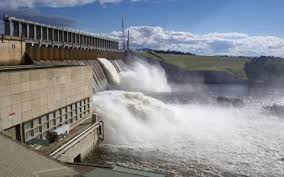The Bagre Dam spillage into Ghana and its severe consequences for communities in northern Ghana, particularly in the Upper East Region and North East Region. The causes, effects, and disaster management efforts.
Causes:
-The Bagre Dam in Burkina Faso reaches maximum capacity during the rainy season, necessitating controlled water release to prevent overflow and damage to the dam.
-Lack of effective communication and coordination between Ghana and Burkina Faso on dam management and spillage schedules exacerbates the issue.
Effects:
Flooding and Destruction: The spillage causes widespread flooding, displacing families, destroying homes, farmlands, and infrastructure.
Food Insecurity: Crop failures and livestock losses lead to food shortages, increased prices, and heightened food insecurity.
Health Risks: Stagnant waters create breeding grounds for waterborne diseases like malaria, cholera, and dysentery.
Economic Hardship: Loss of property, livestock, and crops pushes households into poverty, disrupting economic activities.
Psychological Impact: The annual spillage creates fear, anxiety, and uncertainty among affected communities.
Disaster Management by NADMO:
Early Warning Systems: NADMO works with the Water Resources Commission to alert communities about impending spillage and provide evacuation instructions.
Evacuation and Relief Efforts: NADMO coordinates evacuation efforts and provides relief supplies to affected communities.
Sensitization: NADMO sensitizes farmers and communities on precautionary measures and the importance of avoiding farming near riverbanks.
Lessons and Recommendations:
Improved Communication: Establishing a binding protocol for real-time data sharing and predefined spill thresholds between Ghana and Burkina Faso could mitigate the impact.
Infrastructure Development: Investing in flood-resistant infrastructure, reservoirs, and irrigation systems can help reduce vulnerability.
Sustainable Land Management: Promoting sustainable land-use practices and livelihood diversification can enhance community resilience.
Forecast-Based Financing: Adopting forecast-based financing can enable timely evacuations and safeguard food stocks and livestock.
-The Bagre Dam spillage has significant impacts on communities in northern Ghana, particularly in the Upper East Region.
-A summary of statistical reports and analysis from 2013 to 2025:
Humanitarian Impact:
Lives Lost: At least 81 confirmed deaths across major spillage years, with 25 in 2009, 17 in 2010, 10 in 2014, 19 in 2020, and over 30 in 2018.
Displacement: Over 120,000 people were displaced or directly affected in various years, including over 100,000 in 2018.
Food Insecurity: Crop losses lead to food shortages, increased prices, and heightened food insecurity, exacerbating malnutrition rates among households.
Agricultural Impact:
Farm Losses: Over 76,000 hectares of farmland were destroyed, with 75,000 farms destroyed in 2018.
Crop Losses: An estimated 144,000 metric tonnes of food crops were lost in the Upper East Region in 2007, and over 127 metric tonnes of maize were lost in 2018.
Economic Impact:
Income Losses: Average income losses of GH¢4,000 per household, with some losing over GH¢40,000, devastating subsistence farmers.
Infrastructure Damage: Bridges, roads, schools, and clinics damaged or destroyed, disrupting access to essential services.
Recommendations:
Improved Communication: Binding protocol for real-time data sharing and predefined spill thresholds between Ghana and Burkina Faso.
Infrastructure Development: Investing in flood-resistant infrastructure, reservoirs, and irrigation systems.
Sustainable Land Management: Promoting sustainable land-use practices and livelihood diversification.
Forecast-Based Financing: Adopting forecast-based financing to enable timely evacuations and safeguard food stocks and livestock. Enditem
Compiled by Daniel Dammir Laar a.k.a DaDamLaar of BEDEREN FM 102.7MHz in Bunkpurugu of the North East Region of Ghana.
Share Us



